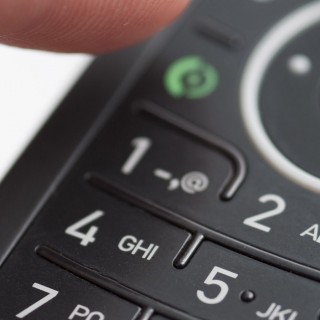
In the post “Telemarketers Press 1 Campaign Anti-Pattern“, we discussed adding a DTMF ‘1’ to your answering machine message. This was to increase the number of billed “call transfer” or “referral” charges to the business that is using telemarketing. This seems to be a pretty common offering for robocalled telemarketing. The autodialers do their job, calling millions of numbers to deliver a message. The message pleads for you to press ‘1’ for more exciting information that causes your wallet to gush forth it’s contents. In the end, you feel used and abused, and begin that walk of shame back to return the phone to its cradle. Or so the telemarketers want.
However, after looking around at web sites for providers of “Press 1 Campaign” services, I noticed this little gem:
Where this came from isn’t important, they filter on the Federal DNC list, so I’m not going to link it. If you can’t read the graphic, it says:
Free Simultaneous Call Limitation
You only have a limited number of people who can answer the phone at the same time. When a specific number of people are simultaneously talking with your call center, your Live Transfer Lead campaign will AUTOMATICALLY stop. This ensures your call center will never be inundated with too many contacts, but enough to keep everyone busy.
Did they say “Stop”?(Reads again)STOP? Yes, yes they did. So if a call center only has 20 agents, and the average call time is 5 minutes ( (60/5) * 20 ), that means they can only handle around 240 calls per hour. Or only 1 call every 15 seconds at full capacity. Assuming they have a 0.1% response rate (callers pressing ‘1’), they can make 66 calls per second in order to assure all agents busy. That’s around 3,801,600 calls placed over 2 8-hour shifts. Such a feature is probably common in most “Press 1” campaign service providers.
So what happens if just an extra 120 people per hour press ‘1’, even to just request to be put on their Do No Call list? That drops their usable capacity to 120 calls/hour. The outbound call rate would drop to an average of 33 calls/second AUTOMATICALLY if this “Stop” statement isaccurate. That means for every minute you keep them on the line, nearly 200 people aren’t getting called. Over a typical 16 hour day, that’s 1,900,800peoplewould not get called. And it only takes 1,920 people throughout the day. It would also drop their revenues by 50%. That’s significant.
If we only concentrate on dropping their revenue but just 10%, it only takes 24 people/hour, or just 384 people per day. And save nearly 400,000 people from having their homes disturbed by telemarketers.
This particular service boasts a telephone database of 250,000,000 numbers. Is getting384 people per day to Torment Telemarketers too much to ask?


Pingback: Predictive Dialers and Robocalls are poor Marketing | Tormenting Telemarketers